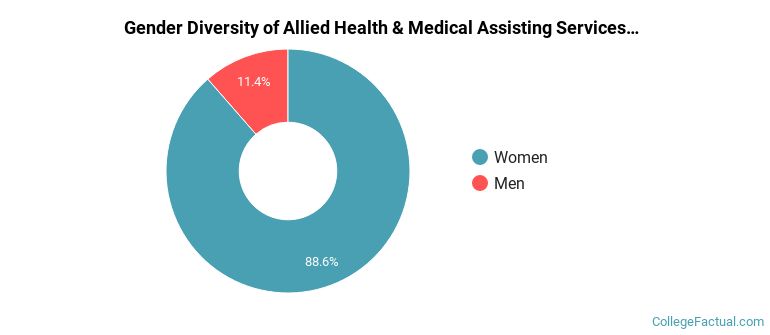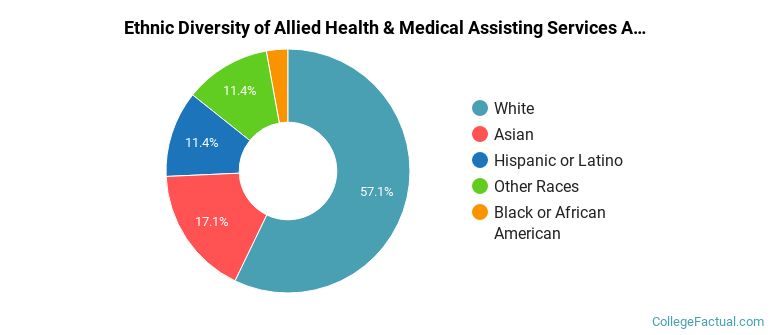 by our College Data Analytics Team
by our College Data Analytics TeamWe've gathered data and other essential information about the program, such as the ethnicity of students, how many students graduated in recent times, and more. In addition, we cover how UAA ranks in comparison to other schools with medical assisting programs.
Go directly to any of the following sections:
The bachelor's program at UAA was ranked #78 on College Factual's Best Schools for medical assisting list.
Out-of-state part-time undergraduates at UAA paid an average of $824 per credit hour in 2022-2023. The average for in-state students was $258 per credit hour. Information about average full-time undergraduate tuition and fees is shown in the table below.
| In State | Out of State | |
|---|---|---|
| Tuition | $6,192 | $19,776 |
| Fees | $1,374 | $1,917 |
| Books and Supplies | $720 | $720 |
| On Campus Room and Board | $12,412 | $12,412 |
| On Campus Other Expenses | $8,882 | $8,882 |
Learn more about UAA tuition and fees.
UAA does not offer an online option for its medical assisting bachelor’s degree program at this time. To see if the school offers distance learning options in other areas, visit the UAA Online Learning page.
Of the 35 students who earned an associate's degree in Allied Health & Medical Assisting Services from UAA in 2021-2022, 11% were men and 89% were women.

The majority of the students with this major are white. About 57% of 2022 graduates were in this category.
The following table and chart show the ethnic background for students who recently graduated from University of Alaska Anchorage with a associate's in medical assisting.

| Ethnic Background | Number of Students |
|---|---|
| Asian | 6 |
| Black or African American | 1 |
| Hispanic or Latino | 4 |
| White | 20 |
| Non-Resident Aliens | 0 |
| Other Races | 4 |
| Related Major | Annual Graduates |
|---|---|
| Nursing | 142 |
| Health/Medical Prep Programs | 84 |
| Public Health | 68 |
| Mental & Social Health Services | 25 |
| Dental Support Services | 23 |
View All Allied Health & Medical Assisting Services Related Majors >
More about our data sources and methodologies.